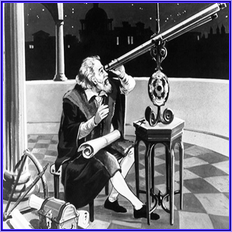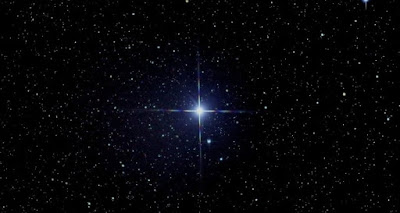But Still, It Turns Around ...
In 1609, the
Italian scientist Galileo Galilei, inserting two lenses into an old, useless
organ tube turned it into a telescope.
It brought
objects near only thrice. But even such a weak device was amazing for that
time. Many noble inhabitants of Padua climbed together with Galileo to a high
tower to look from there at the ships sailing in the sea: the ships were
visible in the tube two hours before they arrived at the harbor. This telescope
resembled a microscope in its structure: a glass lens was also inserted at the
front of it, and a magnifying glass was inserted in the back.
 |
| Galilei and His Telescope |
But, unlike a
microscope, the glass lens in it did not give an enlarged image; in order for
the lens to enlarge, you need to bring the subject very close to it. And
through the tube, they looked not at the close, but at the distant objects.
Only the second glass enlarged the image. Therefore, the magnification was
insignificant.
But the glass lens “collects”
the rays, it serves as a light funnel. The larger it is, the more light it
captures. The lens in the human eye is no more than a bean. And the telescope’s
glass lens can, of course, be made much larger.
 |
| The Starry Sky Through a Telescope |
So Galileo did. He
soon made a new telescope with a magnification of already thirty times and with
a lens many times larger than a human lens. The light funnel of this telescope
collected a hundred times more light than the lens of the human eye.
On
January 7, 1610, Galileo directed his telescope into the sky and froze stunned:
he saw such an extraordinary picture. The keenest man sees in the sky no more
than three thousand stars. Galileo saw in his telescope many thousands of such
stars that no one had seen before him: the telescope increased the brightness
of faint stars and made them visible.